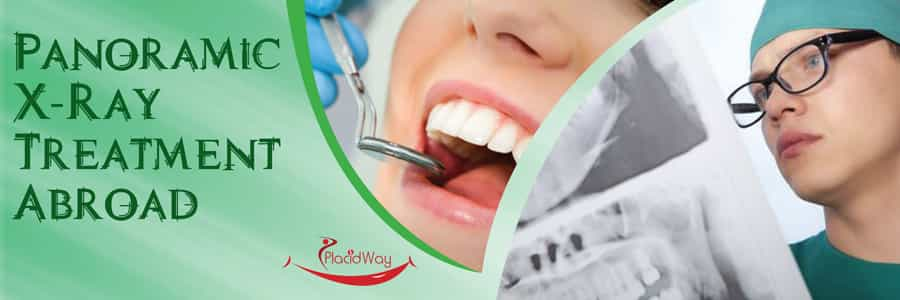
Overview
X-rays are a vital component of dental care and hygiene. An x-ray allows dentists and dental professionals to see the inside structure of teeth as well as any damage or decay going on inside the tooth that is not visible to the naked eye. Diagnostic x-rays provide advanced warning for not only tooth decay, but impacted wisdom teeth, the overall structure and alignment of the teeth, jaw and sinuses, but also provide dentists and oral surgeons with a variety of views to determine best course of treatment for dental health.
Understanding Dental X-Rays
Many individuals are concerned with exposure to radiation caused by x-ray technology, but dental x-rays and panoramic x-rays expose individuals to a very small amount, usually between 2 to 4 rem (a unit of measurement of exposure to medical radiation). According to the National Council on Radiation Protection and Measurements, individuals are exposed to roughly 350 mrems (millirems - 1,000 millirems equals 1 rem) on a yearly basis through normal background exposure to radiation sources.
Put more simply, an individual would need to receive roughly 70 full mouth series of dental x-rays averaging 18 to 20 films per series over the period of the year to reach the maximum specified safe occupational radiation level determined by the Washington State Department Of Health.
Types of Dental X-Rays
A full mouth x-ray series is often taken in a dentist's office and involves four Bitewing films taken at angles to look for decay. Bitewing and Periapical film require the use of small cardboard insets that are placed inside the mouth, which contain film. Periapical films are taken from different angles to show supporting bone and tooth root growth and development. X-rays are taken from different angles and angles to reveal a variety of views of the teeth.
Bitewing films contain three elements; teeth, film, and x-ray beam taken at 90° angles. Such x-rays offer accurate representations of the structure and shape of teeth and show bones, fillings, and decay.
A Periapical film shows some distortion and is able to view teeth and structure that is not necessarily aligned or parallel in view, as in the case of Bitewing films. Distortion is a benefit in this case, as it enables a dentist to view spaces within the mouth that an exact 90° angle or view can't display.
A Panoramic film utilizes technology that enables a dentist to take x-rays of the teeth from outside the mouth. The panoramic film machine emits a beam rather than relying on film placed inside the mouth. The technology is called a tomograph, which utilizes computer assisted technology to focus x-rays on specific areas of tissue.
For a panoramic x-ray, an individual stands in front of the machine with the chin placed on a structure that prevents movement. The machine literally swivels around the individual, enabling it to take a 360° view of the mouth. In most cases however, x-rays are taken in a complete half circle from one ear to the other, creating two dimensional representations of the teeth.

Benefits of A Panoramic X-ray
Even though panoramic x-ray is are slightly lower in resolution then Bitewing or Periapical film x-rays, they are less invasive than traditional x-ray technology and provide a multitude of scanning options that utilize computerized tomography (CT) scans that create multiple angles that are eventually manipulated by software to create multiple images as well as 3-D images.
Panoramic x-rays are an important tool in the early diagnosis of bone and gum disease, oral cancer, joint dysfunction, sinus deformities or disease and for obtaining baseline data for ongoing and long-term dental care.
How Much Do Panoramic X-rays Cost?
A panoramic x-ray may cost 3 to 5 times more than traditional Bitewing x-ray series. Four bitewing x-rays may cost between $40 and $100. Full mouth series cost roughly $150 - $250 in the U.S. Visitors to Costa Rica pay an average of $115, while those traveling to India or Thailand may pay about $60 for comparable x-rays.
Who Provides Panoramic Dental X-Rays?
Panoramic dental acts rays are often taken in the dentist's office. Dental technicians operate the machine. The dentist of your choice and staff members should be certified by local and state dental accreditation organizations or associations.
Get in touch with us and find out more about your options!
Dental Tourism | Cosmetic Dentistry | Implants | Root Canals | Dentures | Bridges | Orthodontics | Dental Holidays Abroad